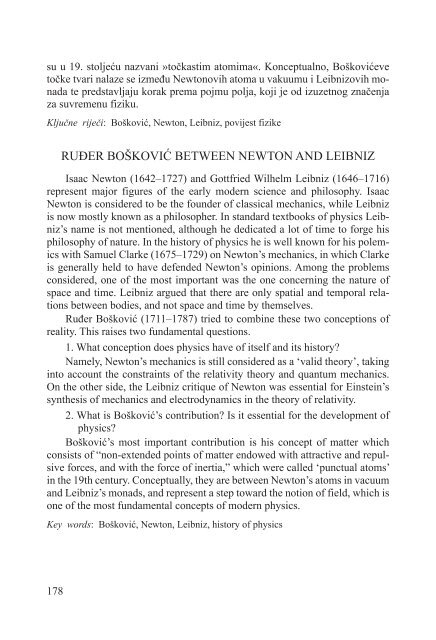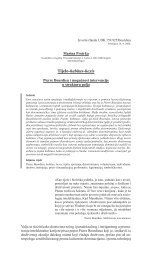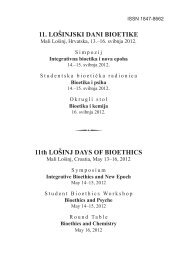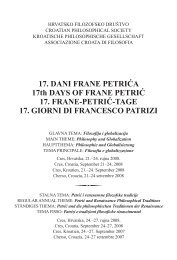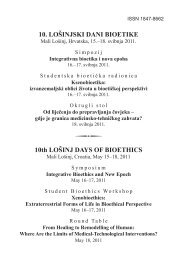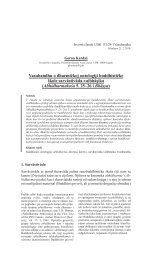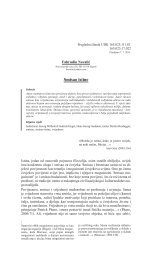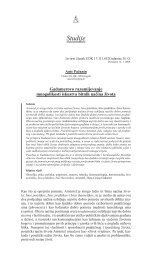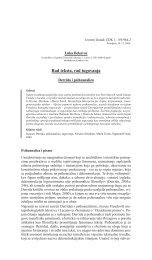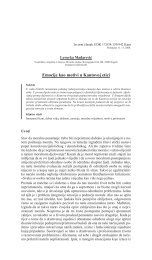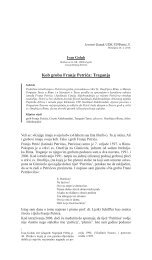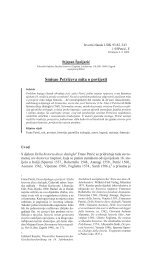Programska knjižica - Hrvatsko filozofsko društvo
Programska knjižica - Hrvatsko filozofsko društvo
Programska knjižica - Hrvatsko filozofsko društvo
Create successful ePaper yourself
Turn your PDF publications into a flip-book with our unique Google optimized e-Paper software.
su u 19. stoljeću nazvani »točkastim atomima«. Konceptualno, Boškovićeve<br />
točke tvari nalaze se između Newtonovih atoma u vakuumu i Leibnizovih monada<br />
te predstavljaju korak prema pojmu polja, koji je od izuzetnog značenja<br />
za suvremenu fiziku.<br />
Ključne riječi: Bošković, Newton, Leibniz, povijest fizike<br />
RUĐER BOŠKOVIĆ BETWEEN NEWTON AND LEIBNIZ<br />
Isaac Newton (1642–1727) and Gottfried Wilhelm Leibniz (1646–1716)<br />
represent major figures of the early modern science and philosophy. Isaac<br />
Newton is considered to be the founder of classical mechanics, while Leibniz<br />
is now mostly known as a philosopher. In standard textbooks of physics Leibniz’s<br />
name is not mentioned, although he dedicated a lot of time to forge his<br />
philosophy of nature. In the history of physics he is well known for his polemics<br />
with Samuel Clarke (1675–1729) on Newton’s mechanics, in which Clarke<br />
is generally held to have defended Newton’s opinions. Among the problems<br />
considered, one of the most important was the one concerning the nature of<br />
space and time. Leibniz argued that there are only spatial and temporal relations<br />
between bodies, and not space and time by themselves.<br />
Ruđer Bošković (1711–1787) tried to combine these two conceptions of<br />
reality. This raises two fundamental questions.<br />
1. What conception does physics have of itself and its history?<br />
Namely, Newton’s mechanics is still considered as a ‘valid theory’, taking<br />
into account the constraints of the relativity theory and quantum mechanics.<br />
On the other side, the Leibniz critique of Newton was essential for Einstein’s<br />
synthesis of mechanics and electrodynamics in the theory of relativity.<br />
2. What is Bošković’s contribution? Is it essential for the development of<br />
physics?<br />
Bošković’s most important contribution is his concept of matter which<br />
consists of “non-extended points of matter endowed with attractive and repulsive<br />
forces, and with the force of inertia,” which were called ‘punctual atoms’<br />
in the 19th century. Conceptually, they are between Newton’s atoms in vacuum<br />
and Leibniz’s monads, and represent a step toward the notion of field, which is<br />
one of the most fundamental concepts of modern physics.<br />
Key words: Bošković, Newton, Leibniz, history of physics<br />
178


